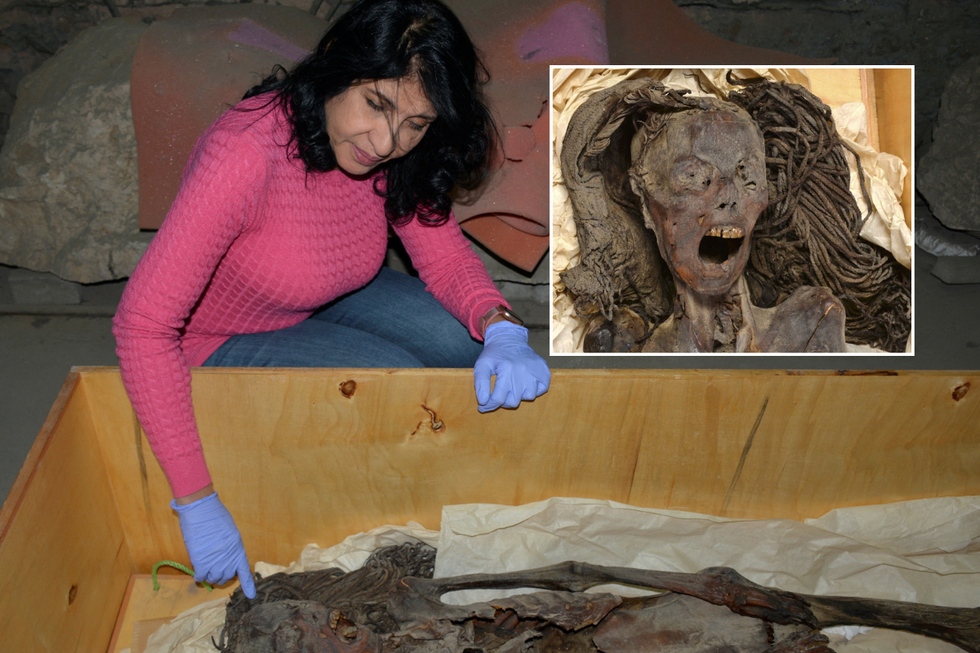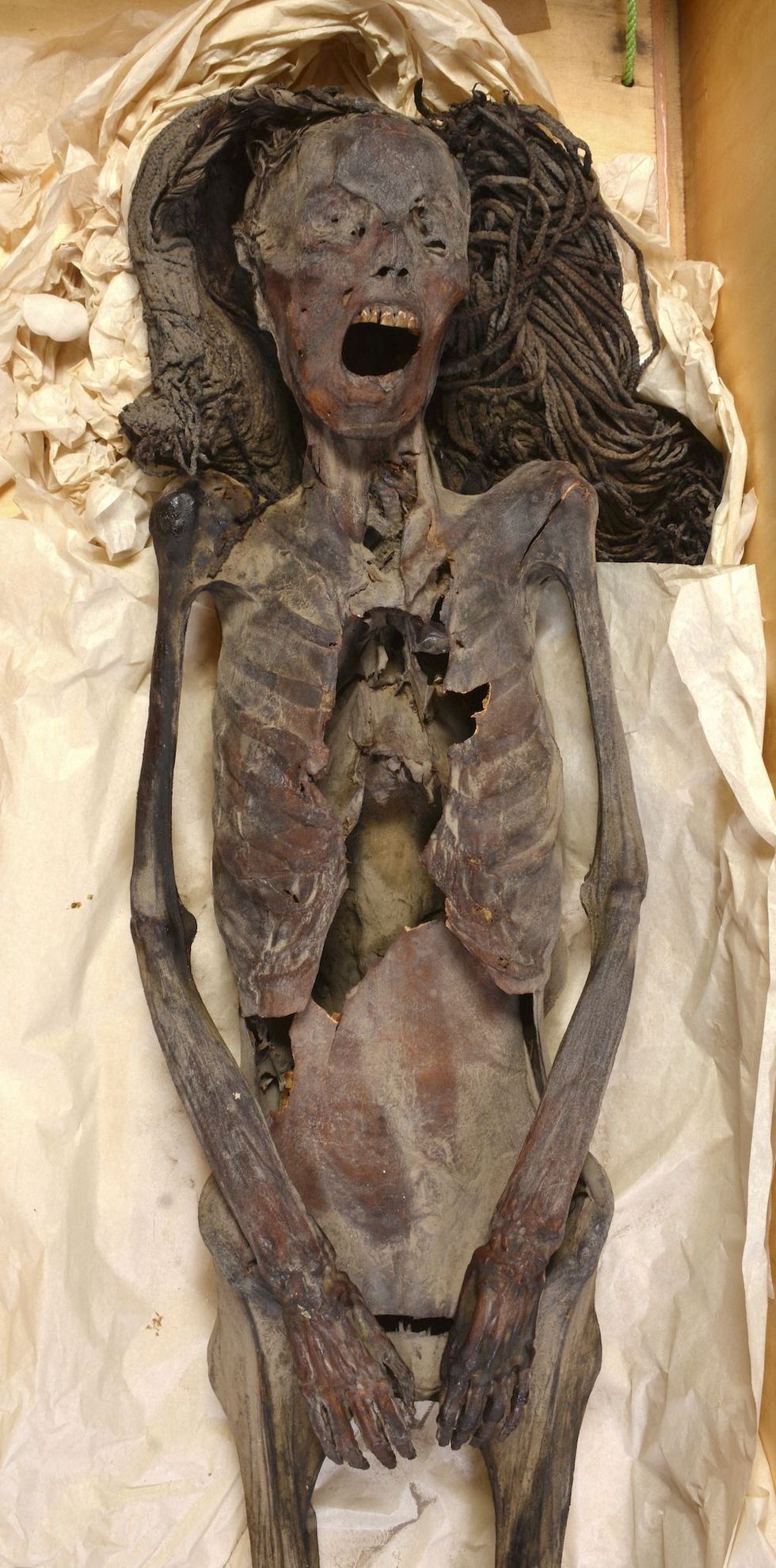Professor Sahar Saleem examines the mummy
Reuters
The chilling discovery was found at the site of the ancient city of Thebes during excavation
Don't Miss
Most Read
Trending on GB News
Researchers in Egypt may have finally sold the mystery of one of archaeology's creepiest finds.
A discovery during a 1935 archaeological expedition at Deir el-Bahari near Luxor found a mummy of a woman with her mouth wide open in what looks like an anguished shriek.
Scientists now have an explanation for the "Screaming Woman" mummy after using CT scans to perform a "virtual dissection."
It turns out she may have died in agony and experienced a rare form of muscular stiffening, called a cadaveric spasm, that occurs at the moment of death.

Professor Sahar Saleem examines the mummy
Reuters
The examination indicated that the woman was about 48 years old when she died, had lived with mild arthritis of the spine and had lost some teeth, said Cairo University radiology professor Sahar Saleem.
Professor Saleem said: "In ancient Egypt, the embalmers took care of the dead body so it would look beautiful for the afterlife. That's why they were keen to close the mouth of the dead by tying the jaw to the head to prevent the normal post-mortem jaw drop.
"[We can rule out] that the mummification process had been careless and that the embalmers had simply neglected to close her mouth. In fact, they mummified her well and gave her expensive funerary apparels - two expensive rings made of gold and silver and a long haired-wig made from fibers from the date palm."
Asked whether the woman may have been embalmed while alive, Saleem added, "I don't believe that this is possible."
LATEST DEVELOPMENTS

The "Screaming Woman" mummy, discovered in 1935 at Deir Elbahari near Luxor and dating to about 1500 BC
Reuters
Cadaveric spasm, a poorly understood condition, occurs after severe physical or emotional suffering, with the contracted muscles becoming rigid immediately following death, Saleem said.
"Unlike postmortem rigor mortis, cadaveric spasm affects only one group of muscles, not the entire body," Professor Saleem added.
"This opened the way to other explanations of the widely opened mouth - that the woman died screaming from agony or pain and that the muscles of the face contracted to preserve this appearance at the time of death due to cadaveric spasm.
"The true history or circumstances of the death of this woman are unknown, hence the cause of her screaming facial appearance cannot be established with certainty."
The "Screaming Woman" was found at the site of the ancient city of Thebes during excavation of the tomb of a high-ranking official named Senmut, the architect, overseer of royal works and reputed lover of queen Hatshepsut, who reigned from 1479-1458 BC.
The mummy was inside a wooden coffin in a burial chamber beneath Senmut's family tomb. Her identity has not been determined but her jewellery, the gold and silver rings with images of scarab beetles, a symbol of resurrection, made of the gemstone jasper - showed her socioeconomic status.
Professor Saleem added: "She was likely a close family member to be buried and share the family's eternal resting place,"
Saleem was unable to determine how the woman died, saying, "We frequently cannot determine the cause of death in a mummy unless there is CT evidence of fatal trauma." Saleem cited evidence of a fatal head injury, slit neck and heart disease in three royal mummies.








